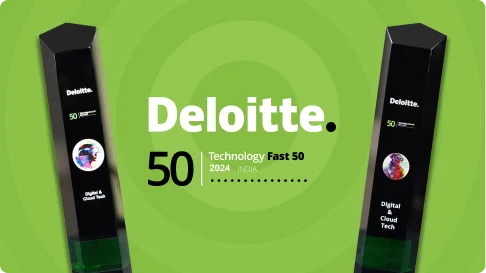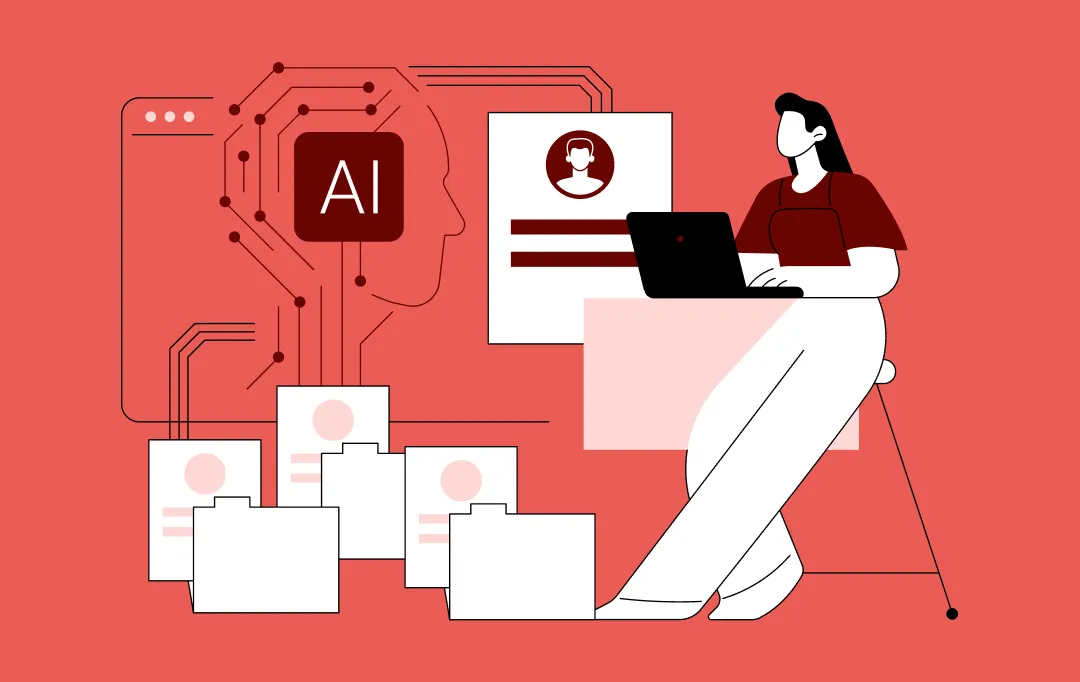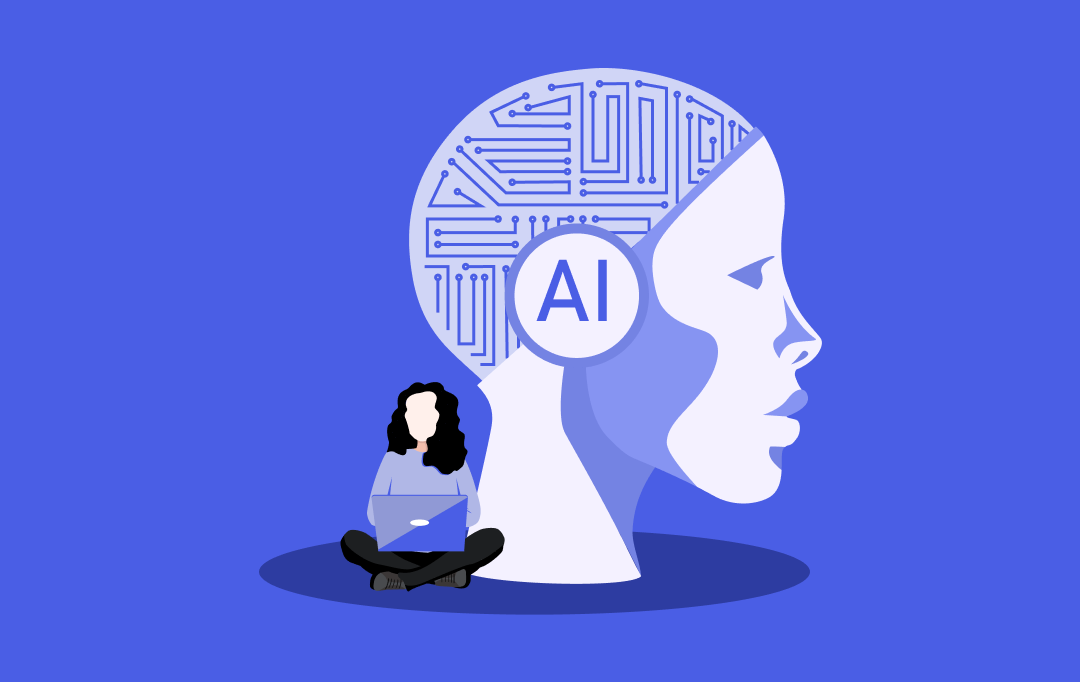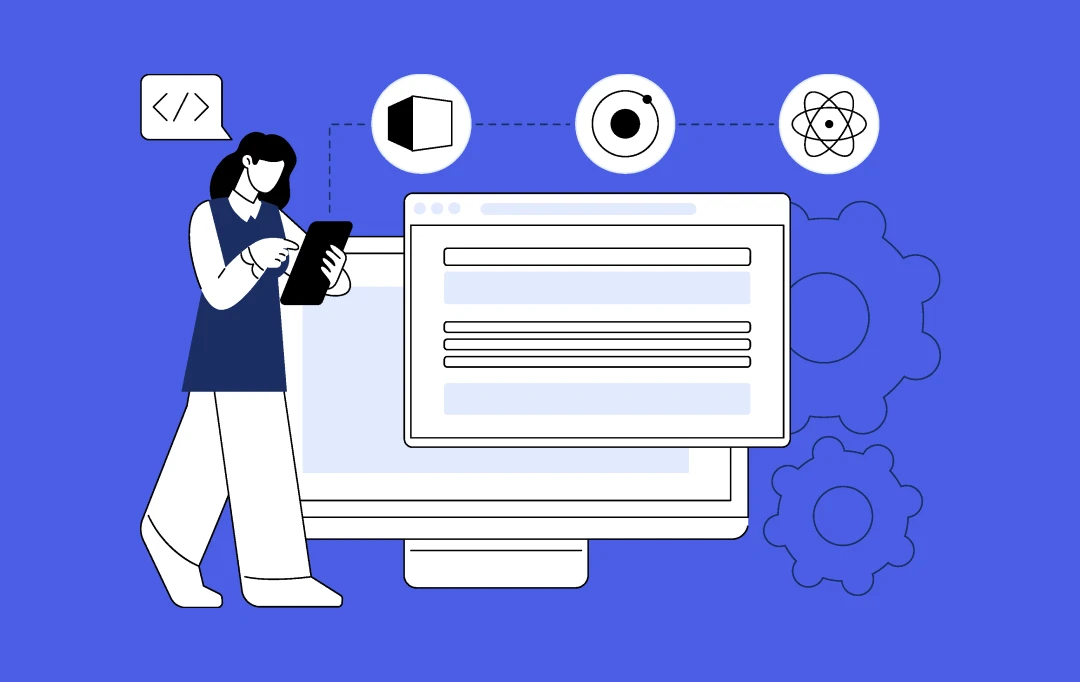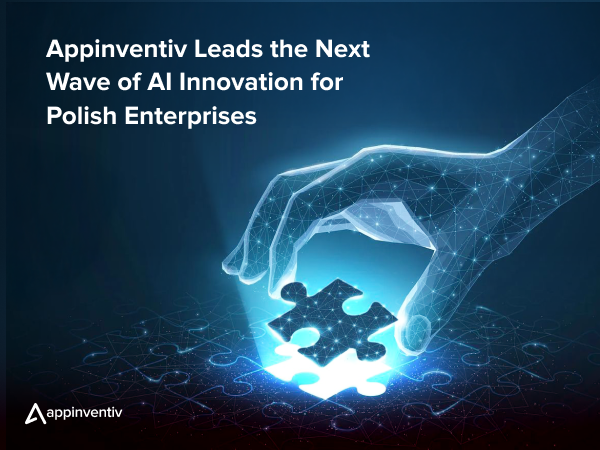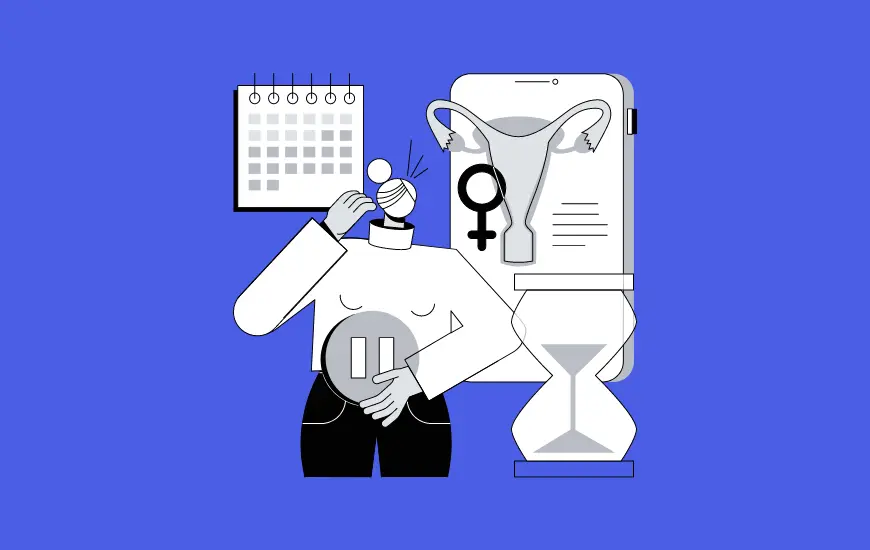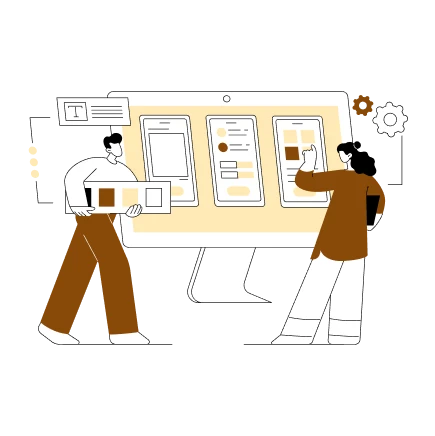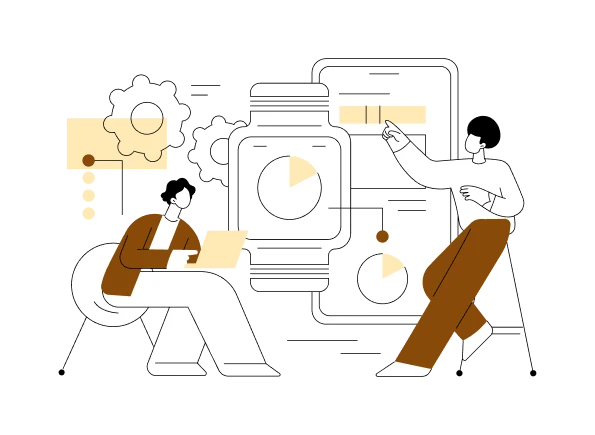- How Long Does It Take to Develop an App?
- The practical answer
- Mobile vs web isn’t the same race
- How categories influence time
- Why timelines matter beyond delivery
- The Stages Behind an App Timeline and How Long Each One Usually Takes
- Discovery And Requirement Analysis
- UX Research And Wireframing
- UI Design
- Architecture Planning
- Frontend And Backend Development
- API Development And Integration
- QA Testing Cycles
- Security Reviews
- Deployment And App Store Launch Timelines
- Post-Launch Stabilization
- Understanding Timelines Through Different Levels of App Complexity
- Simple Apps
- Medium-Complexity Apps
- Complex or Enterprise Apps
- Examples of App Development Timeline (Real-World Scenarios)
- Key Factors Affecting App Development Timelines
- Scope And Feature Depth
- Design Requirements
- Technology Stack
- Integrations And External Systems
- Compliance And Security
- Team Structure
- Clarity Of Requirements
- External Factors That Slow Down App Development
- Changing Requirements
- Delayed Third-Party Approvals
- App Store Review Delays
- Unstable APIs
- Stakeholder Alignment
- Legacy Systems
- Unclear Documentation
- Shifting Scope
- How Long It Takes to Do Development and Testing?
- Parallel vs Sequential Development
- Regression Cycles
- Load, Performance, and Stress Testing
- UAT and Stakeholder Sign-offs
- Security and Penetration Testing
- How to Estimate Your App Development Timeline Accurately
- Complexity Scoring
- Feature-Level Estimation
- Prioritization Frameworks (MoSCoW, RICE)
- Timeline Modeling
- Using Story Points and Agile Sprints
- Strategies For Speeding Up App Delivery
- How To Reduce App Development Time Without Compromising Quality
- Avoiding Scope Creep
- Early Design Decisions
- Clear Documentation
- Strong Product Ownership
- Dedicated Team Structure
- Rapid Prototyping
- Lightning Sprints
- Pre-Built Accelerators
- Cost vs Timeline: How Time Impacts Budget
- Cost Differences Based on Build Time
- Why Rushing Increases Cost
- How Optimized Planning Reduces Burn
- Timeline vs Team Size vs Budget
- How Long Does It Take to Develop an Application With AI?
- App Development Timeline Checklist for Businesses
- Business Readiness
- Tech Readiness
- Feature Readiness
- Compliance Readiness
- Launch Readiness
- Why Appinventiv Is the Right Partner for Faster, High-Quality App Development
- FAQs
- App timelines shift based on scope, workflows, and how clearly the project is defined on day one.
- Complexity, integrations, and compliance add more time than the coding itself.
- Mobile apps usually take longer than web builds because of devices, OS rules, and store approvals.
- Real-world examples show most serious products fall between 8 weeks and 12 months.
- External delays often don’t come from engineering but from vendors, APIs, approvals, and shifting decisions.
- Testing isn’t a final step as it runs alongside development and shapes the actual launch date.
- The right team cuts weeks by removing rework, tightening discovery, and keeping decisions moving.
When you sit in a leadership role, you quickly realize that building an app isn’t just another item on the tech roadmap. It becomes a conversation about timing, budgets, teams, and how fast the business wants to move. Naturally, the first thing everyone asks is how long does it take to develop an app. And they ask it because everything else depends on that answer.
Most people think timelines are set in stone. They rarely are. Sometimes the idea is clear but the workflows aren’t. Sometimes the design is locked but the backend needs a rethink. Sometimes the teams are aligned but the integrations take longer than expected. And sometimes you simply need more time to get the experience right. That’s the real world of enterprise development. It moves fast, but it also needs room for accuracy.
Over the years, we’ve seen how timelines shift based on decisions made in the first two weeks. We’ve also seen how the right choices-clarity in scope, a clean architecture, a steady feedback loop-can save months. The goal isn’t speed for the sake of speed. It’s a speed that doesn’t break later.
That’s exactly what this blog focuses on. We’ll break down how app timelines work, what shapes them, the stages you’ll go through, how testing fits in, why delays happen, and what you can realistically do to move faster without cutting corners. By the end, you’ll know what to expect and how to plan your build with confidence.
Share your scope and we’ll map out a build plan that fits your targets, budget, and launch window, without the usual surprises.
How Long Does It Take to Develop an App?
Let’s start with the question almost every leadership team asks first, because everything else depends on it – cost, planning, hiring, sequencing, and how fast you can capture a market opportunity. When people ask how long does it take to develop an app, they’re really trying to understand the level of effort behind the build.
The practical answer
Most apps take anywhere from a few weeks to several months. The reason the range feels wide is simple: the timeline changes the moment your complexity changes. A basic app with a limited feature set can move quickly. A product with multiple modules, user roles, or deep integrations takes longer. And if you’re building at an enterprise scale, timelines stretch further because of compliance, security, testing depth, and backend readiness.
For most leadership teams, the real concern isn’t just the overall build, but how long does it take to develop a mobile app that can actually pass store reviews and handle real users.
Mobile vs web isn’t the same race
A web app typically moves faster because it lives in one environment. A mobile app requires design variations, device checks, OS-level adjustments, and store approvals, which naturally extend the timeline. That’s why there’s no single template answer to how long does app development take – it changes the moment your type, scope, integrations, or compliance requirements change..
| Build Type | Typical Timeline | What Usually Adds Time |
|---|---|---|
| Web App | 6 to 14 weeks | Complex dashboards, large databases, heavy integrations |
| Native iOS App | 10 to 20 weeks | App Store approvals, device testing, design variations |
| Native Android App | 10 to 20 weeks | Device fragmentation, performance tuning |
| Cross-Platform (Flutter/React Native) | 8 to 18 weeks | Shared codebase helps, but stores still require full reviews |
How categories influence time
Each industry has its own rhythm. Developing an on-demand delivery app usually has predictable workflows while it always moves faster. A FinTech or HealthTech product demands security reviews, data validations, and integration with external systems. A social product requires real-time interactions. The more responsibility your app carries, the more time you need to engineer stability.
Why timelines matter beyond delivery
Your timeline isn’t just a delivery date. It shapes cost, launch readiness, internal coordination, and how fast you can turn an idea into measurable returns. A rushed build leads to expensive rewrites. A well-planned one creates momentum.
Now that we’ve given you a quick glimpse of the bigger picture, let’s shift toward the clarity you actually need – how complexity changes timelines, what affects delivery, and how to evaluate your own build with confidence.
The Stages Behind an App Timeline and How Long Each One Usually Takes
Once you know the big-picture timeline, the next step is understanding how the work actually unfolds. Every build goes through a set of stages of app development. Some move fast. Some require deeper thinking. And some depend on decisions you make along the way. Breaking them down helps you see where the time goes and what each phase demands from your team.

Discovery And Requirement Analysis
This is where everything gets aligned – goals, features, user journeys, technical needs, and the business reasoning behind each decision.
- Typical duration: 1 to 3 weeks
- In this time, teams map the idea, validate assumptions, and build clarity so development doesn’t stall later.
UX Research And Wireframing
Here, the focus shifts to structure. What screens do you need? How should users move through the product? What pain points must be solved immediately?
- Usual timeline: 2 to 4 weeks
- Researchers gather insights, and designers sketch flows that feel natural, simple, and consistent.
UI Design
This phase gives the app its personality. Colors, layouts, components, interactions – all shaped to match the brand and the audience.
- Time needed: 3 to 6 weeks
- The team builds screen-by-screen visuals that make the app feel polished, modern, and trustworthy.
Architecture Planning
Before coding begins, engineers decide how the system will function behind the scenes. They outline databases, services, APIs, scalability options, and security layers.
- Estimated duration: 1 to 3 weeks
- Good architecture reduces rework and keeps the app stable as it grows.
Frontend And Backend Development
This is the hands-on phase where everything takes shape: interfaces, logic, flows, data handling, notifications, dashboards, and more.
- Timeline range: 6 to 20 weeks, depending on scope
- Developers turn designs into working screens and connect them to real data and business rules.
API Development And Integration
Most modern apps don’t work alone. They connect to payment systems, analytics tools, internal software, or third-party platforms.
- Typical duration: 2 to 8 weeks
- The team handles authentication, routing, error states, data formatting, and smooth communication across systems.
QA Testing Cycles
Testing runs alongside development, but it also has its own dedicated cycles. Manual checks, automation, performance tests, device reviews – all meant to catch issues early.
- Testing window: 3 to 8 weeks
- The goal is simple: no surprises on launch day.
Security Reviews
Every app, especially enterprise ones, goes through reviews for data protection, access control, encryption, and compliance checks.
- Time required: 1 to 3 weeks
- This reduces risks and keeps your product aligned with industry expectations.
Deployment And App Store Launch Timelines
Once everything is stable, the app is packaged, prepared, and pushed live. Web launches go quickly; mobile stores involve review queues. By this point, most leaders aren’t asking about builds anymore; they’re asking how long does it take to launch an app once development is stable, testing is done, and store submissions are ready.
- Deployment range: 1 to 2 weeks
- App Store and Play Store approval can add extra days depending on feedback or clarifications.
[Also Read: What It Takes To Successfully Publish Your App On AppStore?]
Post-Launch Stabilization
The first few weeks after release are crucial. Real users interact with the system, and small refinements help smooth the experience.
- Stabilization period: 2 to 6 weeks
- The team monitors performance, resolves edge cases, and prepares for the next round of improvements.
Appinventiv’s Insight:
Across hundreds of builds, we’ve seen that most timeline delays don’t come from engineering but from misaligned early decisions. When discovery, design logic, and backend readiness are locked in the first two weeks, teams avoid rework and save up to 25 to 30 percent of the overall development time. The fastest projects we deliver are always the ones with the strongest beginnings.
Understanding Timelines Through Different Levels of App Complexity
Every app doesn’t take the same amount of time to build. Some products move fast because the scope is tight and the logic is straightforward. Others take longer because they involve more screens, deeper workflows, integrations, or enterprise-grade responsibilities. Looking at complexity levels is the easiest way for any business leader to estimate how long their build might realistically take.
Below is a simple breakdown of the timeline based on app complexity:
Simple Apps
These are the builds that move the fastest. They usually have a small set of screens, clear user actions, and minimal backend work. Think of apps that focus on a single function without branching flows.
A simple app generally takes 8 to 12 weeks, depending on how polished you want the experience to be.
What usually increases the pace here:
- Limited navigation and fewer screens
- Basic forms, simple content display, or informational features
- Light backend or sometimes none at all
- Straightforward UI with no custom animations
- No third-party integrations or just one basic API
Leaders choose this category when the goal is to validate an idea quickly or launch an MVP with a narrow scope.
Medium-Complexity Apps
These take more time because the product has multiple roles or deeper interactions. You start seeing dashboards, dynamic content, user accounts, payments, or features that need synced data.
Most medium builds take around 3 to 6 months, depending on how many modules you include.
Typical elements that slow things down here:
- Multiple user journeys instead of just one
- Requirement of a structured backend with databases, authentication, and dashboards
- Several third-party integrations like payment gateways or SMS services
- More polished UI with custom components
- Features like notifications, search, chat, or location tracking
- Admin panel for internal teams
This is where most business apps fall. There’s real functionality, real users, and features that support both customers and operations.
Complex or Enterprise Apps
This category sits at the top because the product carries heavier responsibilities – security, workflows, data structures, multiple roles, and often large-scale architecture. These aren’t apps that get built in weeks. They need careful planning, multiple sprints, and testing cycles.
[Also Read: Enterprise Mobile App Development: How It Can Accelerate Your Business Growth]
A complex or enterprise app usually takes 6 months to over a year, depending on integrations, compliance, and scale.
Things that stretch the timeline here:
- Advanced user permissions, role-based controls, and multiple dashboards
- Heavy backend architecture involving microservices or distributed systems
- Deep integrations with ERPs, CRMs, payment systems, logistics networks, or healthcare records
- Data encryption, audit trails, logging, and regulatory alignment
- AI, NLP, chatbots, real-time analytics, or personalization engines
- Offline capabilities, caching layers, and synchronization logic
- Large UI systems and design libraries to maintain consistency across modules
This level is common in industries like healthcare, FinTech, logistics, retail and more – anywhere the app is central to business operations.
Examples of App Development Timeline (Real-World Scenarios)
Every app has its own pace, but seeing real examples makes it easier to picture how long similar products usually take. These rough timelines come from patterns we see again and again across projects with clear requirements and stable feedback cycles.
| App Type | Typical Timeline | What Usually Drives the Time | Example |
|---|---|---|---|
| Fitness App | 8–12 weeks | User profiles, workout plans, progress tracking, wearable sync. Most of the flow is predictable, so builds move faster. | Soniphi |
| eCommerce App | 16–24 weeks | Multi-sided setup, product listings, payments, order flows, seller dashboards, and admin controls. | Adidas |
| Social Media App | 20–30 weeks | Real-time feeds, messaging, notifications, media handling, and strong moderation tools. | Vyrb |
| Food Delivery App | 16–22 weeks | Customer and partner flows, live tracking, payments, repeat orders, and logistics dashboards. | KFC |
| Healthcare App | 20–32 weeks | Secure communication, health monitoring, medicine scheduling, and compliance workflows. | DiabeticU |
| Enterprise SaaS Platform | 6–12 months | Complex roles, heavy backend automation, analytics, integrations, and multi-environment deployments. | ILITY |
| AI-Driven Business App | 12–24 weeks | Data pipelines, model integration, training cycles, and conversational or predictive modules. | MyExec |
| Logistics / Transit App | 4–8 months | Routing, live tracking, driver workflows, control tower views, and API-heavy mobility logic. | TrackMyShuttle |
| Large Enterprise Platform | 8–14 months | Multiple teams, multi-country rollout, backend rebuilds, automation layers, and legacy modernization. | Americana ALMP |
| Unified Enterprise System | 6–12 months | Mobile + web environments, worker tools, operations modules, cloud setup, and deep integrations. | HIPP |
Explore how our custom development approach gives you faster estimates, clearer direction, and a product that fits your business – not a template.
Key Factors Affecting App Development Timelines
Every app moves at its own pace, and that pace is shaped by a mix of decisions you make early and realities you discover along the way. Now that you understand how long does it take to develop an app, let’s look into the factors that genuinely influence how long a build takes so you can plan with clarity instead of guessing.
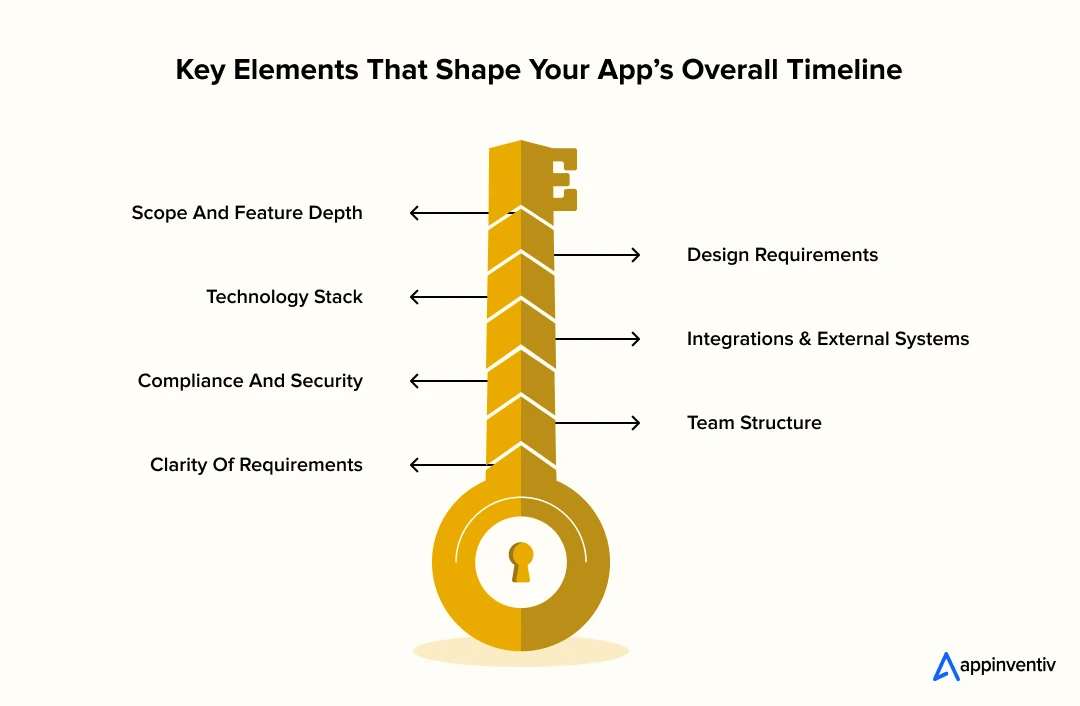
Scope And Feature Depth
The more you expect the product to do in its first release, the longer the build runs. Simple flows move fast, but once you add layered logic, role-based access, analytics, messaging, payment gateway integration, or automation, the timeline stretches. Most delays at the leadership level come from adding “just one more thing” after development starts.
Design Requirements
Some teams want a clean, fast interface. Others want micro-interactions, complex animations, custom components, and branded experiences. Both are valid, but not equal in time. Design sets the tone for development, so extra detailing here naturally adds more weeks to the schedule.
Technology Stack
Your tech choices decide how hard or how smooth the journey becomes. A modern stack with strong libraries, documentation, and community support speeds things up. Legacy systems, outdated tech, or uncommon stacks slow it down. If you’re building across iOS, Android, and the web, the stack matters even more.
[Also Read: Legacy Application Modernization Strategy: A Comprehensive Guide to Revitalizing Your IT Infrastructure]
Integrations And External Systems
Every integration has a personality of its own. Some APIs are clean and reliable. Others take repeated testing because of limited documentation, slow response times, or inconsistent behavior. If your product relies on payments, logistics partners, banking rails, or government systems, factor in extra time for alignment and approvals.
Compliance And Security
Sensitive industries don’t allow shortcuts. Apps built for finance, healthcare, or government move through additional checks. Security reviews, encryption work, policy mapping, and audit readiness all take dedicated time. These steps keep you protected but add weight to the timeline.
[Also Read: How Should Enterprises Chart DT-driven Compliance Challenges]
Team Structure
A focused, senior team moves faster than scattered contributors working in fragments. When design, development, QA, and product work together in tight loops, the timeline shrinks. When communication is slow or responsibilities overlap, the build drags.
Clarity Of Requirements
Projects move quickly when the team knows exactly what needs to be built. Unclear flows, changing priorities, or missing documents create interruptions. Most timeline extensions happen not because of development issues but because alignment takes longer than expected.
Every app moves at its own pace, and how long does app development take is shaped by a mix of decisions you make early and realities you discover along the way.
Appinventiv’s Insight:
In complex builds, integrations and compliance contribute more to delivery time than the features themselves. Our cross-functional pods and pre-built accelerators reduce this friction by handling API alignment, security mapping, and documentation upfront, ensuring the timeline stays steady even when third-party systems move slowly.
External Factors That Slow Down App Development
Even when your plan is solid, outside factors can change the pace of delivery. Some of these delays can be controlled with the right preparation, while others depend on teams, vendors, and systems you don’t fully own. This is exactly why leaders often ask how long app development takes even after a project has started – because timelines shift when these external pieces move.
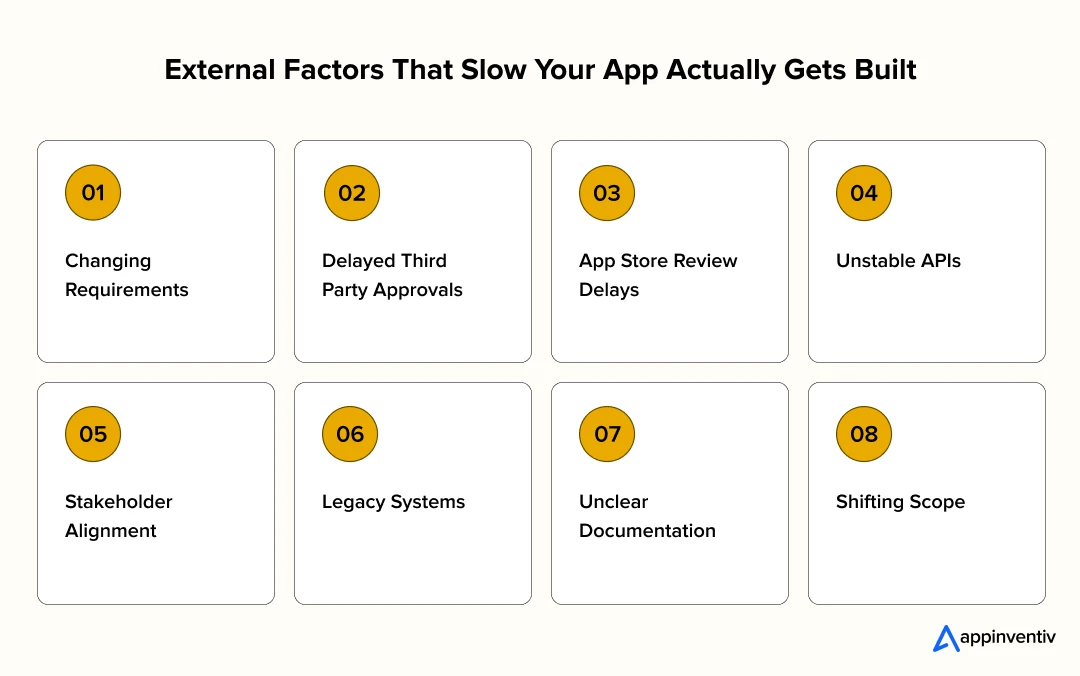
Changing Requirements
When the scope keeps evolving mid-project, timelines stretch. Small tweaks are normal, but repeated changes to flows, features, or priorities slow everyone down. Clear decisions early on help the entire team move without friction.
Delayed Third-Party Approvals
Some features rely on external vendors – payment gateways, banks, logistics partners, government APIs, compliance bodies, or integration teams. If their approval cycles run late, your timeline does too. These delays are common in enterprise builds.
App Store Review Delays
Mobile apps don’t go live instantly. Both Apple and Google have their own review queues. If your app uses payments, location, data capture, or sensitive permissions, the review can take longer. This adds time even if your development was perfect.
Unstable APIs
If your app depends on an external system that breaks often or returns inconsistent data, development slows down. Engineers spend time fixing edge cases, not building new features. Stable APIs keep projects predictable.
Stakeholder Alignment
Enterprise projects usually involve multiple decision-makers. When approvals take time or teams have different expectations, development pauses until everyone is aligned. Fast decisions keep builds smooth.
Legacy Systems
Connecting modern apps to old systems can take longer than expected. Legacy software may have limited documentation, outdated tech, or slow data access. Integrating with these systems often extends timelines.
Unclear Documentation
When business rules, workflows, or data structures aren’t clearly explained, teams end up guessing. This leads to rework, which affects timeline and quality. Clean documentation can save weeks.
Shifting Scope
This isn’t just about changing requirements. It’s when the entire vision expands mid-way – new modules, extra roles, new dashboards, added integrations, or bigger analytics needs.
Once the external factors affecting app development time are clear, the next thing businesses need to appreciate is the rhythm between building and validating the product. Most teams assume the development cycle ends when coding ends, but that’s never how digital products work in the real world.
The speed and quality of your release depend on how long it takes to do development and testing together, not separately. When both move in sync, you ship faster and with fewer surprises. When they don’t, the project slows down even if the code is technically complete.
How Long It Takes to Do Development and Testing?
Most timelines stretch because teams underestimate how development and testing move together. They’re not two separate tracks. They feed each other, and the quality of one directly affects the speed of the other.
The truth is, your product isn’t just being “built.” It’s being shaped, tested, corrected, improved, and prepared for real users in every sprint. And this phase often determines how stable your final launch really is.
Two things matter most here – how your teams work, and how quickly issues are found and fixed. A smooth rhythm can save weeks. A scattered one can push your date by months.
Now let’s break down what actually happens during this phase.
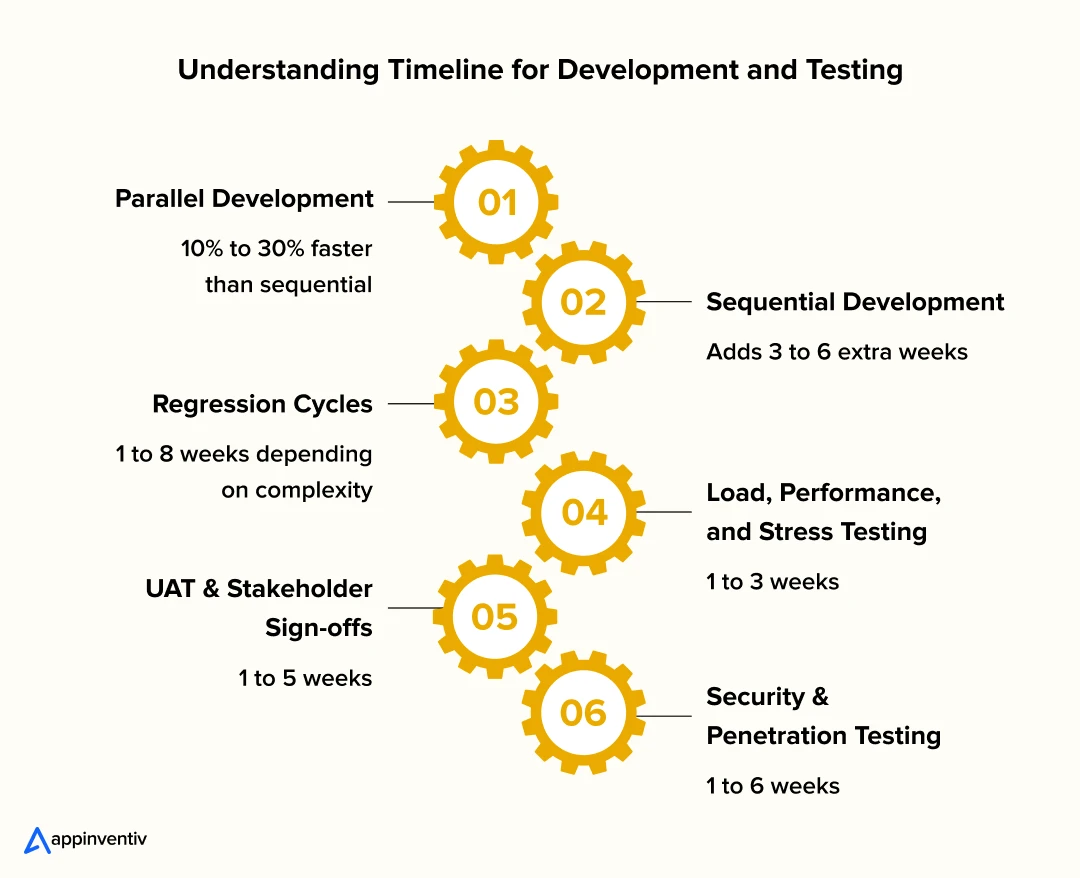
Parallel vs Sequential Development
When teams work in parallel, design, frontend, backend, and QA move together. This shortens the build by a few weeks because everyone is unblocking each other in real time.
Typical range:
- Well-coordinated parallel development usually takes 10 to 30 percent less time than running everything sequentially.
- Sequential builds are slower – you can easily add 3 to 6 extra weeks depending on complexity.
Regression Cycles
Every new feature impacts something that was built earlier. Regression rounds check whether the older flows still work smoothly.
Typical range:
- Light apps: 1 to 2 weeks
- Mid-complexity apps: 2 to 4 weeks
- Enterprise builds: 4 to 8 weeks spread across sprints
Load, Performance, and Stress Testing
This is where teams see how the app behaves under pressure – real users, real traffic, real data. Scaling, caching, and optimization happen here.
Typical range:
- Most products need 1 to 3 weeks, depending on user volume and backend complexity.
UAT and Stakeholder Sign-offs
This is where business teams validate if the product actually matches their expectations. No matter how smooth the build is, UAT always takes time because real workflows are being tested.
Typical range:
- Business UAT usually takes 1 to 2 weeks
- Multi-team or multi-region UAT can stretch to 3 to 5 weeks
Security and Penetration Testing
This is a must for FinTech, healthtech, SaaS, and enterprise products. The goal is to catch vulnerabilities before launch, not after users are onboard.
Typical range:
- Standard security testing takes 1 to 2 weeks
- Full penetration testing, especially for critical systems, takes 3 to 6 weeks
In most well-run projects, development and testing together account for 60 to 80 percent of the overall timeline. A simple app may finish both in 8 to 12 weeks, while a mid-complexity product may take 4 to 6 months, and enterprise systems often extend to 6 to 12 months or more depending on scale and integrations.
How to Estimate Your App Development Timeline Accurately
Most teams struggle with timelines not because the work is unclear, but because the estimation process is unclear. If you want a reliable answer to how long does it take to create an app, you need a structured way to break your product into parts and assign effort to each one. When this is done right, your internal planning, budget forecasting, and sprint commitments become far more predictable.
Below are the methods most product and engineering teams can use to understand the answer to the question- How to estimate your specific timeline?
Complexity Scoring
Before you plan sprints or features, you need a sense of how heavy the build is.
Teams usually score each module across three buckets: logic, design, and integration.
A simple scoring formula many teams use:
Estimated Complexity = (Logic Weight + Design Weight + Integration Weight) / 3
Scores then translate into build ranges like:
- 1–3: light work
- 4–6: moderate
- 7–10: high complexity
This becomes the base reference for your timeline.
Feature-Level Estimation
Instead of asking “how long will the app take,” break the app into features and estimate each one separately.
Most teams use:
- Hours
- Days
- Or story points
A simple formula many PMs follow is:
Total Time = Sum of all feature estimates + buffer (20–30 percent)
This allows you to adjust timelines anytime a feature changes without redoing the whole plan.
Prioritization Frameworks (MoSCoW, RICE)
Once features are listed, they need to be sorted by importance.
This helps teams decide what ships first and what can wait.
- MoSCoW sorts items into Must-haves, Should-haves, Could-haves, and Won’t-haves.
- RICE uses Reach, Impact, Confidence, and Effort to give each feature a weighted score.
Using these filters trims the timeline and prevents unnecessary work from entering the early sprints.
Timeline Modeling
After complexity and priority are clear, teams map work into sprints.
A common rule of thumb for timeline modeling:
Sprint Duration = Total Story Points / Team Velocity
Velocity is how much the team usually delivers in one sprint.
If velocity is 25 points per sprint, and the app needs 100 points, you’re looking at around four sprints.
Timeline modeling is where planners get a realistic picture of the release date.
Using Story Points and Agile Sprints
Story points represent effort, not time. Once points are assigned, they convert into time using the team’s past sprint velocity.
A simple conversion many teams use:
Time (in weeks) = Total Story Points / Average Weekly Capacity
Strategies For Speeding Up App Delivery
Sometimes the timeline isn’t the problem – the approach is. When teams use the right processes and engineering choices from day one, delivery speed naturally improves. After understanding how long does it take to develop an app, this section will offer you insights into the methods that help teams ship faster without cutting corners.
| Strategy | What It Means In Practice | Why It Speeds Things Up |
|---|---|---|
| Focused discovery | Teams clarify the core problem, map user flows, and lock requirements early. | Reduces rework later and keeps the build steady. |
| Reusable components | Using pre-built modules, design systems, templates, and existing backend blocks. | Cuts weeks of UI and engineering time. |
| MVP-first mindset | Ship the essential features first and scale the rest later. | Eliminates unnecessary bloat and accelerates launch. |
| Choosing the right tech stack | Selecting tools that match your scalability, security, and integration needs. | Avoids slow, complex rewrites and unstable builds. |
| Microservices architecture | Breaking your system into smaller independent components. | Let multiple teams work in parallel. |
| Cross-platform frameworks | Building once and deploying for iOS and Android using Flutter/React Native. | Reduces duplicate work across platforms. |
| Design systems | A shared library of UI rules, components, and patterns. | Speeds up both design and frontend builds. |
| Parallel team pods | Dedicated pods working on backend, frontend, and QA at the same time. | Maximizes velocity instead of waiting on handovers. |
| Automated testing | Running scripts to test stability after each build. | Catches issues early so they don’t pile up. |
| CI/CD pipelines | Automating builds, checks, and deployments. | Delivers updates faster and with fewer human errors. |
How To Reduce App Development Time Without Compromising Quality
When leaders try to move faster, the usual fear is that something will crack. Maybe stability. Maybe the experience. Maybe the budget. So the goal here isn’t to sprint blindly. It’s to shave off weeks or months without damaging the heart of the product. And when someone asks how long does it take to develop an app, this part of the conversation matters more than anything because speed without control always backfires later.
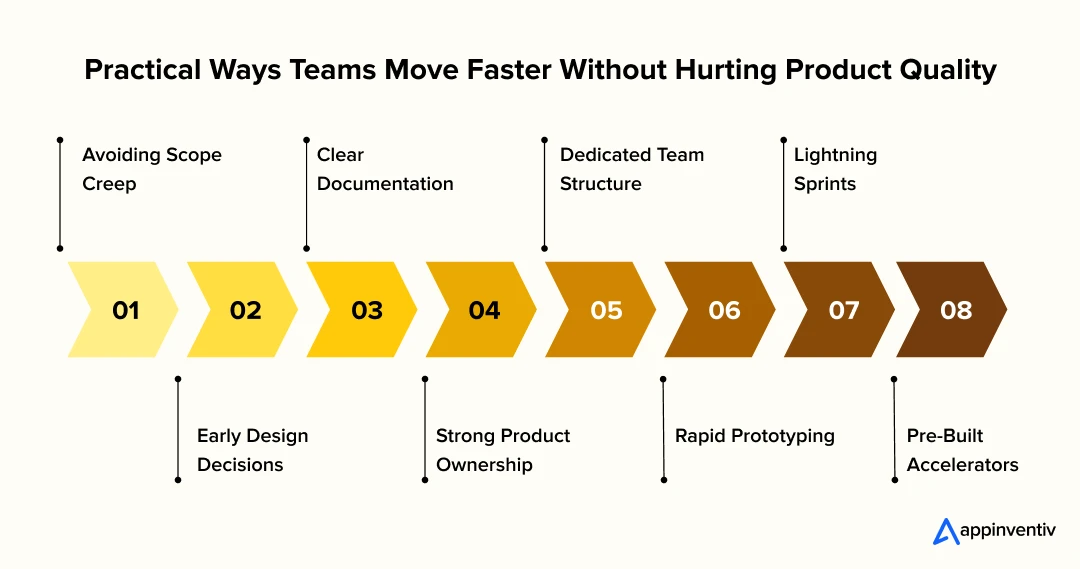
Avoiding Scope Creep
Scope creep is subtle. It rarely shows up as a big change. It usually sneaks in as tiny additions that “won’t take long.” A button here, a new flow there, a small conditional step. Once you multiply that by ten or twenty, your timeline stretches without anyone noticing. Keeping the scope tight doesn’t mean saying no to ideas. It means capturing them, parking them, and revisiting them after launch. That simple discipline keeps teams steady and protects the schedule.
Early Design Decisions
A lot of delays start at the design table, not in development. When screens are unclear, or the experience keeps shifting, developers spend more time waiting than coding. Getting the core journeys right at the start removes most of the friction later. It doesn’t have to be perfect. It just needs to be stable enough for engineering to move without second-guessing what the user is supposed to do next.
Clear Documentation
Documentation sounds boring, but it saves days of back-and-forth. When teams know what each feature is supposed to do, what the edge cases look like, and what “done” actually means, everything flows faster. It cuts confusion, reduces rework, and keeps the entire group aligned. Good documentation isn’t a 50-page manual. Sometimes a crisp explanation with examples is all it takes.
Strong Product Ownership
Fast teams always have one thing in common: someone who makes decisions quickly. A product owner who understands the business, knows the users, and can settle doubts on the spot removes half the bottlenecks. Without that voice, developers wait, designers guess, and QA spends time validating things that might change again. Ownership tightens the loop and helps maintain momentum when decisions get messy.
Dedicated Team Structure
Splitting a team across multiple projects slows everything down. A dedicated development team, even if it’s small, creates pace. They think about the same product daily, share the same context, catch issues early, and adjust faster. It’s the difference between a group that visits the project and a group that lives inside it. Dedicated teams don’t just move quicker; they think quicker because they’re not switching mental tabs all day.
Rapid Prototyping
Sometimes the fastest way to move forward is to stop debating and build a small working version. A quick prototype reveals gaps that long meetings never catch. It also helps teams align on what’s being built before writing a single line of production code. Prototypes clear assumptions, provide clarity, and prevent long rewrites later.
Lightning Sprints
Short, focused bursts of work help teams push forward without losing quality. These aren’t long sprints or rushed deadlines. They’re tight windows where everyone agrees on a small set of outcomes and gets them done without distraction. Lightning sprints are effective because they give the team a sense of closure and let them course-correct often, instead of chasing a massive milestone that keeps shifting.
Pre-Built Accelerators
Not everything needs fresh code. Some features-authentication, notifications, analytics hooks, payment setups-follow predictable patterns. Using pre-built modules cuts down development time, reduces bugs, and keeps the team focused on parts that are truly unique to the business. You save time without compromising quality because the building blocks have already been tested in real products.
Cost vs Timeline: How Time Impacts Budget
When leaders ask about development timelines, they aren’t just asking when the app goes live or how long does it take to make an app in ideal conditions. They are trying to understand what that timing does to their spending. Time has a direct relationship with budget, and in this section, we break down the practical ways in which timelines shape the total cost of an app project. It helps decision-makers plan realistically and avoid the surprises that come when projects stretch longer than expected.
Cost Differences Based on Build Time
Longer timelines usually mean a larger bill because the team stays engaged for a longer period. Engineers, designers, QA testers, project managers – their time adds up. And with every extra sprint, the cost grows. Shorter builds, when planned well, naturally keep the spend tight because the team moves with a clear direction and fewer cycles of rework. The point is simple: mobile app development cost and time travel together, and if one expands, the other follows.
Why Rushing Increases Cost
Speeding up looks good on paper, but it almost always increases the burn. When deadlines shrink, teams are forced to scale up resources, work in parallel, and handle more checks in less time. That often needs more senior engineers, longer working hours, and extra QA capacity. And if the rushed work creates issues later, fixes cost even more. Fast delivery isn’t cheap delivery – it’s simply fast.
How Optimized Planning Reduces Burn
A well-planned project moves at a steady pace. The scope is clear, the design is settled early, and development doesn’t keep looping back. This naturally cuts unnecessary cycles and keeps the team lean. When planning is solid, the engineering effort becomes predictable, and predictable work is always cheaper than reactive work. You spend less fixing problems and more building forward.
Timeline vs Team Size vs Budget
The relationship between team size and timeline isn’t linear. Doubling the team doesn’t half the time. Instead, communication load increases, coordination becomes heavier, and you may actually slow down. The efficient way is to structure a team that’s just large enough to maintain momentum without creating overhead. When the team size aligns with the scope, timelines stay stable and budgets stay under control.
Before we wrap up timelines in the traditional sense, there’s one more angle leaders keep asking about. The moment AI enters the picture, the entire delivery rhythm changes. The build isn’t just about screens, APIs, or user flows anymore. It also depends on data quality, model choices, training cycles, and how tightly AI is meant to sit inside your product. This deserves its own space, because AI work doesn’t run on the same timeline rules as standard development.
How Long Does It Take to Develop an Application With AI?
AI projects tend to behave differently from regular app builds because the effort shifts from “just development” to “development plus learning.” A chatbot, a recommendation engine, or a vision model all rely on training data, model tuning, and iteration. That’s why the question isn’t simply how long does it take, but rather how long does it take until the AI works the way your business needs it to.
| AI Component | What This Usually Involves | Typical Timeline |
|---|---|---|
| AI Chatbot | Building the bot’s core flow, training it on FAQs or internal processes, shaping its tone, and running small feedback loops to make the replies feel natural. More time is needed if the bot must understand industry-specific terms or act as an internal assistant. | 4 to 10 weeks |
| AI Recommendation Engine | Working with user behavior data, cleaning it, mapping patterns, and shaping the logic that predicts what users might want next. If the business has historic data, things move faster. Without it, the team often uses cold-start strategies. | 8 to 14 weeks |
| AI Models | Starting with basic rules, looking at how users respond, and gradually tuning the model to adjust offers, content, or flows. Early results appear quickly, but real accuracy comes after several rounds of refinement. | 10 to 20 weeks |
| Vision AI (Image/Object Recognition) | Preparing or labeling images, training the model to spot objects or patterns, and testing it across various lighting or movement conditions. The quality of the dataset decides how long the team spends here. | 12 to 24 weeks |
| Training Data Work | Collecting data, cleaning messy inputs, labeling samples, or generating new examples when nothing exists. These cycles directly shape model performance, so this part often becomes the deciding factor behind the true timeline. | Varies widely: 2 weeks to several months |
App Development Timeline Checklist for Businesses
Before a team writes a single line of code, there’s a quick reality check every leadership group should run. It’s the difference between a smooth build and a project that keeps stretching because something wasn’t ready. Think of this as a simple pre-flight check. When these parts are in place, timelines stay predictable and your budget stays steady.

Business Readiness
This is where you confirm that the problem, the audience, and the success criteria are clear. If two people on the leadership call describe the app differently, you’ll lose weeks later. When everyone agrees on the “why” behind the product, the path ahead becomes far easier.
Tech Readiness
Every build leans on existing systems in some way. If the APIs aren’t stable, if the backend team isn’t aligned, or if the current infrastructure isn’t capable of supporting the new load, the timeline shifts. This stage is simply about knowing what you have today and what gaps need early attention.
Feature Readiness
This is where you decide what must go into the first version and what can wait. When features are unclear or keep changing, the delivery date moves automatically. A stable feature list gives the design and engineering teams a real starting point.
Compliance Readiness
Apps in finance, health, edtech, logistics, or government run into rules that can’t be ignored. If requirements like data storage rules, encryption, audit trails, or user-consent flows aren’t clear early, teams end up rebuilding parts later. Clarity here protects both the product and the timeline.
Launch Readiness
This final check makes sure everyone knows what “launch” means. Do you need a hard release date? A soft roll-out? Beta testing first? Are the teams ready for approval workflows, app store submissions, and post-launch monitoring? When this is sorted early, the last mile of the journey stays calm instead of chaotic.
Why Appinventiv Is the Right Partner for Faster, High-Quality App Development
Choosing the right team decides how fast you move and how much rework you avoid. When businesses ask how long does it take to develop an app, the honest answer depends heavily on who’s building it. A seasoned team shortens the path; an unprepared team stretches it.
At Appinventiv, speed and quality don’t compete. Our pod-based delivery system trims development timelines by almost a third because every team works like a focused unit-design, engineering, QA, and product thinking together instead of in long handovers. It keeps momentum steady and reduces the “waiting time” that slows most projects.
Our depth of experience also helps. With more than 1600 specialists and 3000+ digital products shipped, we’ve built for every scale-marketplaces, enterprise systems, consumer apps, AI-driven platforms, and cross-industry solutions. This gives us playbooks, accelerators, design systems, and reusable modules that save weeks without cutting corners.
What also matters is how we begin. As a mobile app development services provider, our discovery-first approach helps teams avoid the usual traps-unclear scope, vague workflows, missed integrations, and late-stage surprises. This steady upfront work keeps the timeline stable from day one.
You’ll see the impact of this in the products we’ve delivered. Brands like Body Shop, Americana, KFC, Flynas, IKEA, and Domino’s didn’t just need an app-they needed a dependable partner who could move fast, stay aligned, and protect quality. That’s the role we step into.
And throughout the build, our CI/CD pipelines, security reviews, compliance mindset, and zero-rework policy keep releases smooth and predictable. From the first sprint to launch day, the goal stays the same: ship a product that works at scale, without slowing your business down.
FAQs
Q. What is a standard mobile app development timeline?
A. There isn’t a single “standard,” but most businesses fall into a familiar rhythm. A simple app can be wrapped up in a couple of months, sometimes a little sooner if everything is clear from day one. When the app needs more screens, more roles, or deeper logic, the calendar stretches. By the time you add proper testing, real integrations, and back-and-forth with your team, the timeline usually moves into the few-months range. That’s the honest picture.
When trying to understand how long does it take to make an app before committing budgets and teams, you must look beyond estimates and consider clarity, feature depth, data flows, and how quickly decisions can be made. These factors shape the real timeline more than code ever will.
Q. How long does it take to develop an Android app?
A. Android usually takes a bit longer because of the number of devices and OS versions it must behave well on. If the app is small and straightforward, the timeline feels similar to iOS. Once you add multiple workflows, location features, or anything heavy on UI, you’ll see the extra time show up during testing and polish. Most teams keep a little buffer here for that reason.
When teams compare iOS and Android, they’re essentially asking how long does it take to develop a mobile app that behaves consistently across devices, OS versions, and app store policies.
Q. How long does it take to build an iOS app?
A. iOS moves a little faster because the environment is cleaner and more predictable. You’re building for fewer devices and fewer screen variations, so the work is more focused. Still, once you get into account systems, payments, or anything that needs careful review, the extra time isn’t in coding – it’s in refining and preparing it for the App Store. Approval can add days or weeks, depending on the app.
When looking to understand how long does it take to develop an app, whether iOS or Android, he real answer always comes back to scope, complexity, and how prepared your product is before the first line of code is written.
Q. Is there any difference between the web and mobile app development timelines?
A. Yes, and it’s noticeable. A web app is usually quicker because it lives in one place. There’s no store review, no device fragmentation, no platform-specific UI rules. Mobile takes longer because every feature travels through a longer pipeline – design, build, device checks, OS rules, and then the app store queue. Web feels lighter; mobile feels more layered.
Q. How long do complex apps like fintech, healthcare, or real-time apps take?
A. These take time, and that’s normal. Fintech involves compliance, risk checks, and secure flows. Healthcare brings patient data, audits, and workflow accuracy. Anything real-time needs a strong backend and proper stress testing. Once you add all of that together, the work naturally moves into the many-months zone. It isn’t delayed – it’s the cost of doing it correctly so it doesn’t break the day users rely on it.


- In just 2 mins you will get a response
- Your idea is 100% protected by our Non Disclosure Agreement.
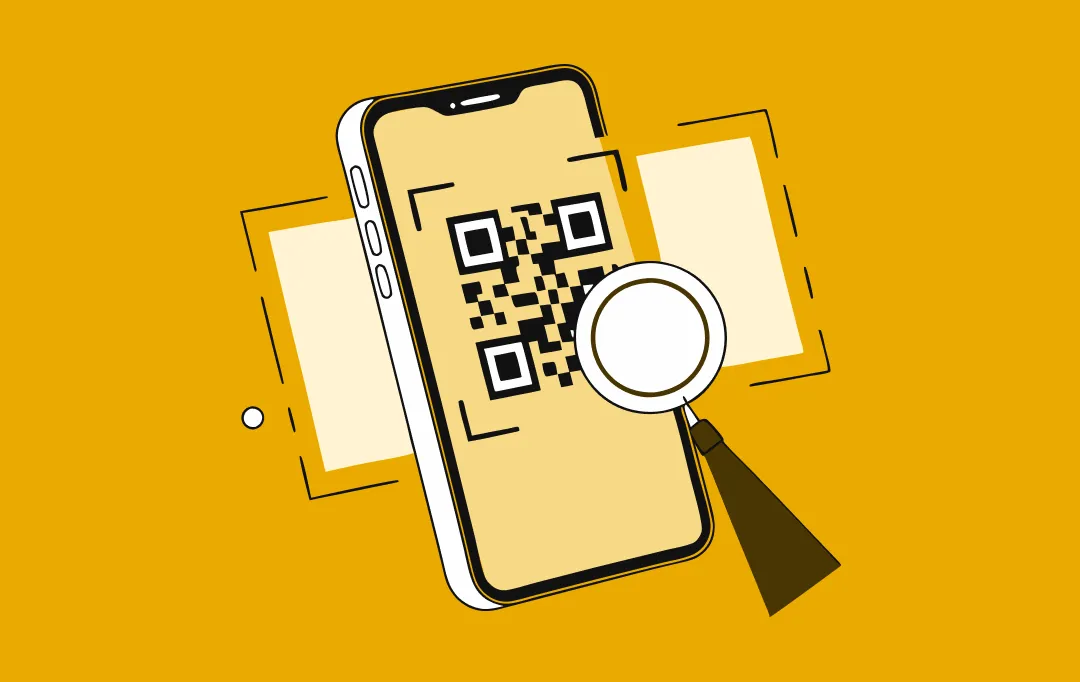
How To Build A Product Scanner App Like Yuka – Explore Features, Cost, Case Studies
Key takeaways: A basic Yuka-style product scanner costs between $40,000 and $80,000, while advanced builds with AI and large databases can reach $400,000 or more. The real work is not scanning barcodes, but managing accurate ingredient data, scoring logic, and compliance with FDA and CCPA rules in the US. Successful apps begin with core features…

How Much Does It Cost to Build a Ticket Booking App like Ticketmaster?
Key takeaways: You'll need anywhere from $40,000 for a basic MVP to over $400,000 for an enterprise-grade solution if you're looking to build an app like Ticketmaster. Want interactive seat maps? Maybe AI recommendations? These features are great, but they'll definitely push your costs up. Here's where you can save some money. Asian developers charge…

Unlocking the Cost of Building a Community Platform Like Qatar Living: What to Expect
Key takeaways: Building a community platform is a business decision first and a technology project second. A strong MVP in Qatar typically starts around QAR 109,200–QAR 254,800, while full-scale platforms move into the QAR 2,184,000+ range based on scale and ambition. Success comes from solving daily user problems, not from copying features. Cost is driven…










